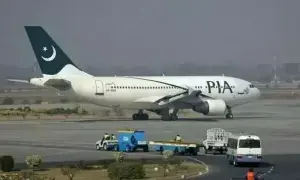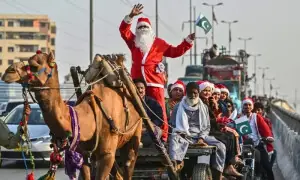Late night meeting of generals: How Bangladesh army sealed Hasina’s fate
The night before long-time Bangladeshi Prime Minister Sheikh Hasina suddenly fled the country amidst deadly protests, her army chief held a meeting with his generals. They decided that the troops would not open fire on civilians to enforce a curfew that Hasina had called for, two serving army officers with knowledge of the discussions told news agency Reuters.
The army chief, Gen. Waker-Uz-Zaman, then conveyed this message to Hasina’s office, making it clear that her soldiers would be unable to implement the lockdown she had ordered. An Indian official briefed on the matter said this signaled that Hasina had lost the army’s support.
These details about the military leadership’s meeting and the message to Hasina have not been reported before. They help explain how Hasina’s 15-year rule, marked by little tolerance for dissent, came to a chaotic and abrupt end on Monday when she fled Bangladesh for India.
The nationwide curfew had been imposed after at least 91 people were killed and hundreds injured in clashes across the country on the previous day, which was the deadliest day since student-led protests against Hasina began in July.
An army spokesman confirmed the Sunday evening discussions, describing them as a regular meeting to get updates after any disturbances, but did not provide further details when asked about the decision-making at that meeting.
Bangladeshi Prime Minister Sheikh Hasina and her son and advisor Sajeeb Wazed could not be reached for comment, despite repeated requests.
Reuters spoke to ten people familiar with the events of the past week, including four serving army officers and two other informed sources in Bangladesh, to piece together the final 48 hours of Hasina’s rule. Many of them requested anonymity due to the sensitivity of the matter.
Hasina, who had ruled Bangladesh for 20 of the last 30 years, was elected to a fourth term in January after arresting thousands of opposition leaders and workers. That election was boycotted by her main rivals.
Hasina’s authoritarian grip on power had been challenged since the summer by protests triggered by a court decision to reserve government jobs for certain segments of the population. While the decision was overturned, the demonstrations had evolved into a movement to oust Hasina.
Army chief Gen. Waker-Uz-Zaman has not publicly explained his decision to withdraw support from Hasina. However, the scale of the protests and the death toll of at least 241 made it untenable for the army to continue supporting Hasina at all costs, according to three former senior Bangladesh army officers.
One retired general said there was a lot of uneasiness within the troops, which likely put pressure on the army chief. On Saturday, Zaman had shown signs of wavering in his support for Hasina when he addressed hundreds of officers and called for protecting lives and showing patience.
Retired senior soldiers were among those who defied the curfew on the day Hasina fled the country
This was the first indication that the Bangladeshi military would not forcefully suppress the violent demonstrations, leaving Hasina vulnerable. Retired senior soldiers were among those who defied the curfew on the day Hasina fled the country, with one former infantry officer saying the army had done what it had promised.
On Monday, the first full day of the indefinite nationwide curfew, Hasina was holed up inside the Ganabhaban, her heavily-guarded official residence in the capital Dhaka.
Outside, tens of thousands of people had gathered in the streets, answering protest leaders’ call for a march to oust the leader. With the situation spiraling out of her control, the 76-year-old Hasina decided to flee the country on Monday morning, according to an Indian official and two Bangladeshi sources.
Hasina and her sister, who was visiting Dhaka at the time, discussed the matter and flew out together, around lunchtime. They left for India.
Indian Foreign Minister Subrahmanyam Jaishankar told parliament that New Delhi had urged various political forces to resolve the situation through dialogue throughout July. But as the crowds gathered in Dhaka on Monday, ignoring the curfew, Hasina decided to resign after a meeting with security leaders.
Jaishankar said Hasina had requested, on short notice, approval to come to India. A second Indian official said it was “diplomatically” conveyed to Hasina that her stay would have to be temporary, to avoid negatively impacting Delhi’s ties with the next government in Dhaka.
Nobel laureate Muhammad Yunus, who the protesting students want to lead an interim government after Hasina’s ouster, told a newspaper that India has “good ties with the wrong people” and urged them to “revisit your foreign policy.” Yunus was not immediately available for an interview.
Late on Monday afternoon, a Bangladesh Air Force C130 transport aircraft landed at Hindon air base outside Delhi, with Hasina on board. She was met there by Ajit Doval, India’s powerful national security advisor, according to an Indian security official.
India had fought to carve out Bangladesh from East Pakistan in 1971. After Hasina’s father was assassinated in 1975, she took refuge in India for years and built deep political ties there. When she returned to Bangladesh, she gained power in 1996 and was seen as more sensitive to India’s security concerns than her rivals.
India also viewed Hasina’s secular stance favorably, as it benefited the 13 million Hindus in Bangladesh. However, there was lingering resentment even among retired Bangladeshi soldiers that Hasina had been allowed to leave the country. One veteran said “Personally, I feel that she should not have been given a safe passage. That was a folly.”
For the latest news, follow us on Twitter @Aaj_Urdu. We are also on Facebook, Instagram and YouTube.





















Comments are closed on this story.